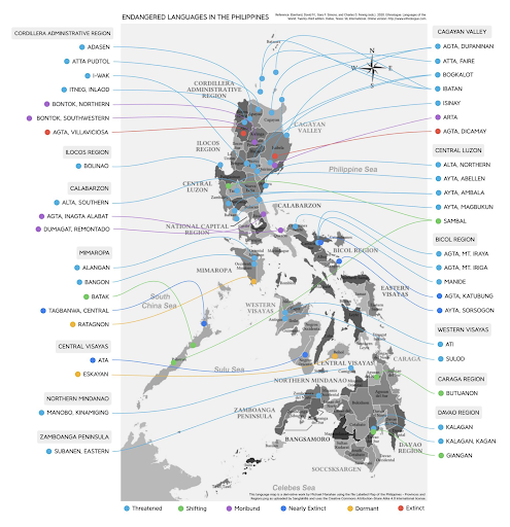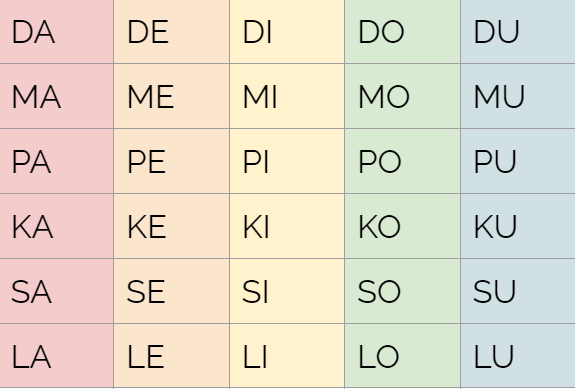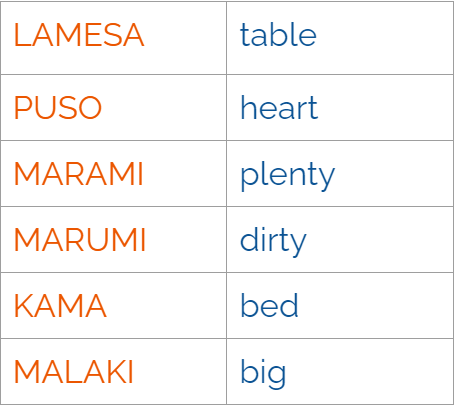Ang Kasaysayan ng Ating Wika
written by Jayson Parba
Background
Did you know that there are more than 180 languages in the Philippines? It is important to remember that while Tagalog-based Filipino is referred to as the country’s national language, other Philippine languages (e.g., Ilokano, Cebuano, Hiligaynon, etc) exist, and they form part of Filipinos’ multiple identities. The majority of Filipinos are multilingual and multicultural. Because of this, they have different ways of knowing things because their multiple languages allow them to experience the world quite differently from others.
Motivating Activity
The teacher asks students the following question:
What languages do you speak or know? Using a venn diagram, draw the languages that you know or familiar with (doesn’t have to be fluent in each of them) and tell the class what you can do (i.e., listening, reading, speaking, and writing) with each language. Use bigger circles for your dominant language/s and smaller ones for those weaker languages.
Processing Activity
Language Orientation: The Story of the Philippine Languages
1. The teacher shows the map of the Philippines in order to demonstrate the linguistic and cultural diversity inherent in most archipelagic countries. The teacher will nominate students to identify languages that are extinct, dormant, shifting, etc.

2. The teacher will trace the historical development of Filipino, the Philippines’ national language:
1937 – Tagalog
1959 – Pilipino
1987 – Filipino
- The official name of the national language, as enacted in Article XIV, Section 6 of the 1987 Constitution:
“The national language of the Philippines is Filipino. As it evolves, it shall developed and enriched on the basis of existing Philippine and other languages.”
3. The discussion will then focus on the basic characteristics of Pilipino (the old name of Filipino) such as:
- 20 letters
- include: ng
- a, b, k, d, e, g, h, i, l, m, n, ng, o, p, r, s, t, u, w, y
- Each letter has its own name:
- A, Ba, Ka, Da, E, Ga, Ha, I, La, Ma, Na, Nga, O, Pa, Ra, Sa, Ta, U, Wa, Ya
- Vowels: A, E, I, O, U
- Consonants: B, K, D, G, H, L, M, N, NG, P, R, S, T, W, Y
- The consonants W and Y are also called semi-vowels.
4. The class will then practice reading the following words formed after combining the vowel and consonant letters of the Pilipino alphabet. The teacher may create more examples or allow the students to form new words


5. Students may be engaged in reading the following sentences so they start getting more familiar with pronunciation in the language.

6. The teacher will then introduce the basic characteristics of Filipino, the “modern” Pilipino language:
- (Tagalog-based) Filipino
- Examples of English words incorporated into Filipino mag-shopping (to go shopping) Tag-lish (Tagalog & English) nagtext (texted), i-share (share something); kompyuter (loan words)
- Contains approximately 5,000 Spanish words
- The Ilokano word ading has no equivalence in Tagalog, therefore integrating it to Filipino is acceptable.
Siya ang ading ko. → He is my younger sibling. - Some Cebuano words e.g., kawatan (thief), buang (crazy), etc. have also been integrated into Filipino.
- Spoken in places like in Manila, Quezon, lingua franca among Filipinos from different parts of the Philippines) Ilocano speakers and Cebuano speakers speak Filipino as their lingua franca.
Culminating Activity
Introducing Someone
| Question (Filipino) | Question (English) | Response (Filipino) | Response (English) |
| Ano ang pangalan mo? | What is your name? | Siya si ______ | His/Her name is ______ |
| Taga saan ka? | Where are you from? | Taga ________ siya | He/She is from ________ |
| Estudyante ka ba? Saan? | Are you a student? Where? | Estudyante siya sa _______ | He/She is a student at _______ |
| _____________ ka ba? Saan? | What is your occupation? Where do you work? | ____________ siya sa _______ | He/She is a ________ at _______ |
| _____________ ko siya. | What is your relationship? | Kaibigan ko siya. | He/she is my friend. |
The teacher gives the students the following writing prompt.
- Imagine meeting for the first time the Filipino family or friends of your friend or colleague, what types of questions would you ask?
- Imagine being in the Philippines for the first time, what expressions would you find useful to communicate to the (monolingual) locals?